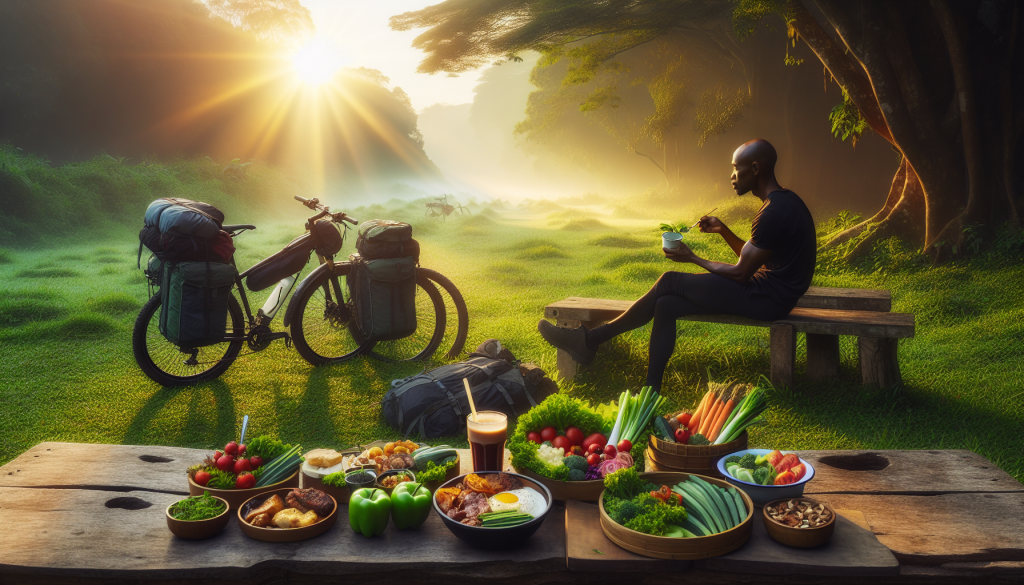Best Protein Sources for Fast Recovery After Bicycle Touring
Bicycle touring challenges your muscles day after day. The physical demand builds up, leading to soreness and slow recovery if nutrition is off. Here’s the fix—protein plays a major role in helping your body rebuild and bounce back.
Nutrition can make or break your trip. Riders who refuel right feel stronger, recover faster, and ride longer. Whether you’re eating meat or sticking with plants, the right foods can reset your muscles and keep your wheels turning.
“You don’t get stronger by training. You get stronger by recovering,” says sports nutritionist Nancy Clark. And that recovery starts with smart protein choices.
1. Why Protein Matters After Bicycle Touring
- Repairs muscle damage caused by long hours of pedaling
- Helps build and maintain lean muscle mass
- Should be eaten within 30-60 minutes post-ride for best recovery
- Touring cyclists need 1.2–2.0 grams of protein per kilo of body weight daily
2. Top Animal-Based Protein Sources for Touring Cyclists
- Canned tuna, salmon, or chicken: High-protein, shelf-stable, and easy to eat right out of the can
- Hard cheeses: Cheddar, gouda, and others hold up well without refrigeration
- Jerky: Light, filling, and packed with protein (think beef, turkey, or salmon)
- Shelf-stable milk or powdered milk: Just add water for a protein boost
- Hard-boiled eggs: Prepare in advance and store in a cooler if needed
3. Best Plant-Based Protein Sources for Vegetarian/Vegan Cyclists
- Lentils, beans, and chickpeas: Canned for ease, dried to save space
- Quinoa and whole grains: Cook fast and offer both protein and carbs
- Tofu and tempeh: Shelf-stable packs or smoked options work great on the road
- Nut butters and trail mixes: Easy to pack, calorie-dense, and full of healthy fats
- Plant-based protein powders: Just mix with water or plant milk post-ride
4. On-the-Go Protein Snacks for Quick Recovery
- Protein bars: Look for bars with 10–20 grams of protein per serving
- Homemade energy balls: Combine oats, nut butter, and a scoop of protein
- Greek yogurt: Great source of protein if you can find a fridge
- Quick finds: Gas stations sometimes carry boiled eggs or dairy drinks
5. Combining Protein with Carbs for Better Recovery
- Protein + carbs = faster muscle repair and better energy replenishment
- Aim for a 3:1 or 4:1 carb-to-protein ratio post-ride
- Easy meals: Peanut butter sandwich, tuna wrap, rice and beans bowl
- Don’t wait hours: Eat within 30–60 minutes of finishing your ride
6. Tips for Packing and Preserving Protein on the Road
- Use zip bags or small containers for portion control and weight balance
- Choose shelf-stable foods: They resist heat and last longer
- Balance nutrition and weight: Mix heavy but essential items (like nut butter) with light foods
- Use a soft cooler for perishables: Ideal for eggs, yogurt, or tofu if needed
7. Sample Recovery Meal Plans for Touring Cyclists
Omnivore Sample Day
- Breakfast: Scrambled eggs, cheese, and whole grain toast
- Lunch: Tuna wrap with avocado and spinach
- Dinner: Chicken and brown rice bowl with veggies
- Snacks: Jerky, protein bar, and chocolate milk
Plant-Based Sample Day
- Breakfast: Oatmeal with almond butter and soy milk
- Lunch: Lentil salad with quinoa and olive oil
- Dinner: Stir-fried tofu with rice and veggies
- Snacks: Plant protein shake and peanut trail mix
Conclusion
Protein helps your body bounce back after long days in the saddle. Whether you’re eating meat or sticking to plants, getting enough protein after your ride keeps your legs strong and your energy high.
Mix it with carbs, eat soon after your ride, and choose foods that fit your packing setup. With the right fuel, you’ll recover faster and feel better each day. Start planning your meals and packing your protein sources for your next bicycle touring adventure today!
